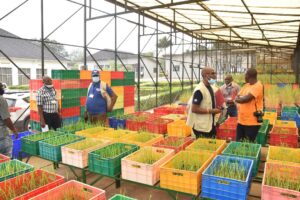An experiment focused on nitrogen use efficiency (organic and inorganic sources) and root system architecture concluded that varieties bred for high-nitrogen inputs may not be suitable for organic agriculture—reinforcing the need for rice varieties to be bred specifically for organic agricultural systems. The experiment aimed to study the responses of IR-28 root system architecture to the availability of different forms of nitrogen, including organic at seedling stage to understand the extent of current rice varieties, which are exclusively bred for intensive agriculture, are suitable for organic agriculture.
The results indicate that combined nitrogen nutrition with nitrate and ammonia is most suitable for root system and seedling growth of rice as compared to a sole source while organic nitrogen nutrition was found least suitable. Even at a higher concentration where ammonia and nitrate showed inhibitory/toxic effects, the root system of IR-28 under organic nitrogen treatment exhibited nitrogen starvation.
The results of the study support the view for a need to breed varieties suited for organic agriculture because varieties, such as IR-28, which is selected and bred for high-nitrogen input intensive agriculture, may not be suitable for organic agriculture. However, to confirm responses of root system architectural traits to organic nitrogen, the study should be replicated with wild and/or landraces of rice, which may have high uptake and assimilation efficiency for organic nitrogen.
Read the full report Root System Architecture and Nitrogen Management published on EcoFarming Daily.










